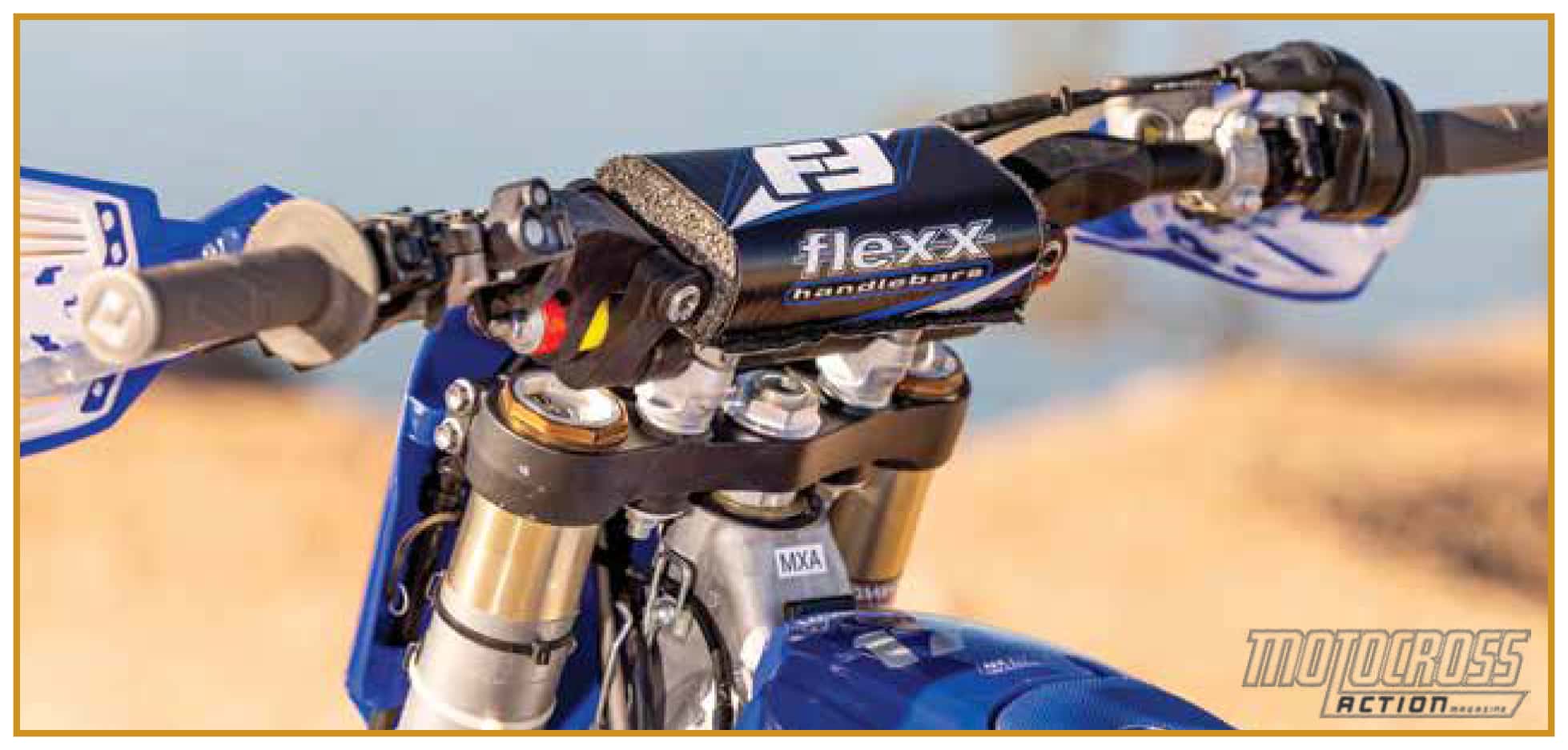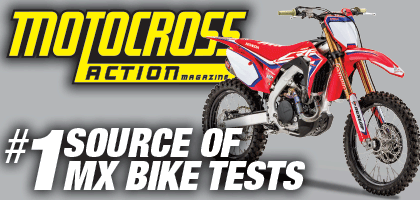MXA TEAM TESTED: FASST COMPANY’S FLEXX HANDLEBARS
WHAT IS IT? Fasst Company’s Flexx handlebars are all about minimizing abuse and enhancing comfort without sacrificing performance.
WHAT’S IT COST? $429.99.
CONTACT? www.fasstco.com or (877) 306-1801.
WHAT STANDS OUT? Here’s a list of things that stand out with Fasst Company’s Flexx handlebars.
(1) Concept. Think of these handlebars as independent suspension for your hands, moving with the suspension to absorb impacts from jumps and bumps. There are competing aftermarket brands that work to reduce vibration and shock through the handlebars, but they use bar mounts with 360 degrees of movement. Our seasoned vet test riders don’t mind those styles of mounts, but our intermediate and pros are riding faster and are experiencing greater G-forces. They can’t stand the floppy handlebar feeling that comes with 360 degrees of movement. Comparatively, the Flexx handlebars only move up and down in the same plane as the forks. Because of that, they maintain precision through the steering column, not sacrificing precision in the corners.
A properly set up Flexx handlebar should feel similar to a traditional handlebar, but you should feel like your forks are tracking better with less abuse coming through your hands and upper body.
(2) Tuning. Like suspension, these bars can be tuned to your preference. They feature 3/4-inch compression elastomers on the inside of the bar and 1/2-inch rebound elastomers on the outside. The bars come with three different compression elastomers (soft, medium, hard) and two different rebound elastomers (medium, hard).
You can also fine-tune the feel of each elastomer by tightening or loosening the nut. If you thread the nut in, it will stiffen the bar; if you thread it out, it will make it more compliant. You can run the elastomer nut anywhere from the second to the fifth thread; three is standard.
(3) Performance. Our test riders were skeptical about the Flexx bars, thinking they would be an off-road-only item, but they were pleasantly surprised. Our first test was at the end of the day at Glen Helen, and the track was rough. We started with the harder (red) dampers, and the bars felt almost like normal handlebars, just with a little more comfort. With the yellow (medium) compression dampers and the red (hard) rebound dampers, we could feel more comfort in the front end, almost like we went a few clicks softer on the forks without the negative feeling of getting too low in the stroke. The most surprising aspect of the test was racing with these handlebars at Fox Raceway (Pala). With big jumps and softer dirt, we expected to dislike the flexible bars on jump take-offs, but our testers were impressed that wasn’t the case. We had spare red (hard) elastomers in the toolbox, but we didn’t need them.
(4) Maintenance. Fast Company recommends incorporating handlebar inspection into your regular maintenance routine. Check the pivot area, center section, crossbars, retaining clips, elastomers and lock nuts. Check for any damage that may have been caused in any recent crashes. When using tie-downs to secure your motorcycle, place the tie-downs through the center section.
WHAT’S THE SQUAWK? The most notable thing is the added weight, but these handlebars are high tech, and the price reflects it. They are over four times more than a regular set of handlebars.
MXA RATING: These handlebars live up to the hype, but the price tag is steep. Thankfully, we haven’t had issues with bending these bars, but the elastomers do wear out over time. You can order a fresh elastomer kit for $29.99.






Comments are closed.